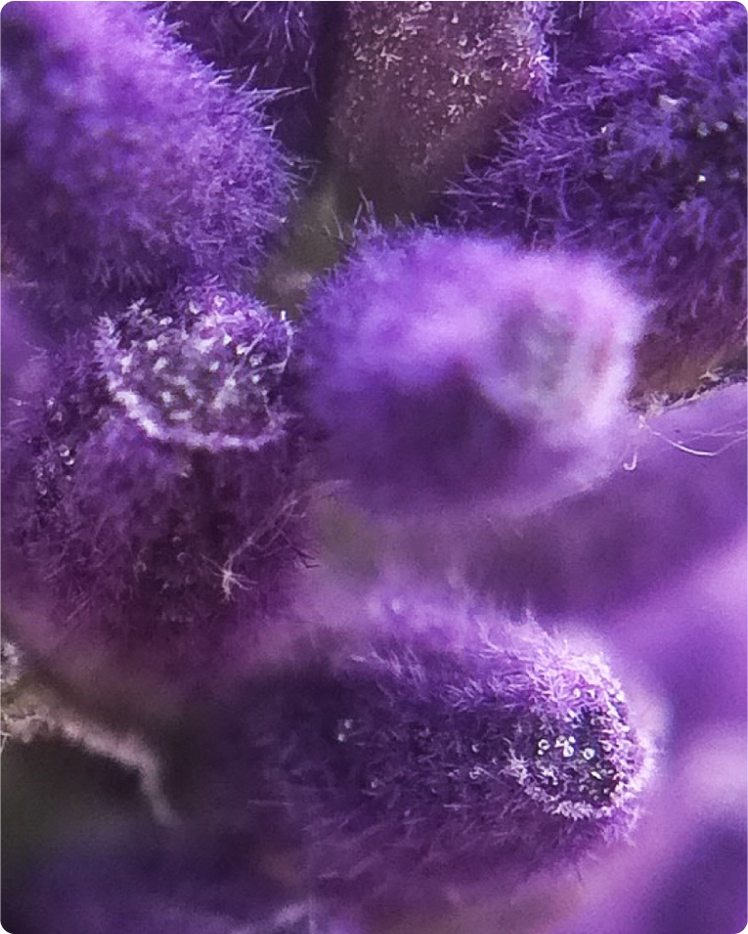About the Oil
Steam-distilled from the delicate flowering tops of Lavandula angustifolia, lavender essential oil is one of the most widely used and universally loved oils in aromatherapy. With a sweet, floral-herbaceous aroma, it’s best known for its ability to calm the mind, support deep sleep, and ease both emotional and physical tension.
Rich in linalool and linalyl acetate, lavender's soothing effects are backed by both tradition and modern science. Its gentle yet powerful composition makes it suitable for a wide variety of uses—from nervous system support to skin repair and beyond.
Why You Would Use the Oil
-
To soothe stress, anxiety, and nervous tension
-
To support sleep onset and quality
-
To ease physical discomfort including muscle tension and cramping
-
For minor skin irritation including burns, blemishes, or bug bites
-
To ground the heart and emotions during times of emotional overload
Clinical Findings
| Study | Participants & Methods | Key Results | Reference |
|
Immune modulation |
81 healthy volunteers inhaled lavender 6×/week for 6 weeks |
Increased secretory IgA (s-IgA) levels by 3.5x, suggesting reduced stress and enhanced immune defense |
Takagi et al., 2019 |
|
Postpartum mood support |
Women postpartum inhaled lavender 4×/week for 8 weeks |
Significant improvement on mood |
Koulivan d et al., 2013 |
|
Neuroprotective, calming effects |
Review of human and cellular studies |
Lavender reduces cortisol levels |
Cavanagh & Wilkinson, 2002 |
Behind The Science (Made Simple)
Lavender essential oil’s deeply calming effects stem from two dominant constituents: linalool and linalyl acetate. These compounds helps to relax lowering cortisol levels, and shifting the body into a parasympathetic state—promoting rest, recovery, and emotional equilibrium.
Its benefits extend beyond relaxation. Studies confirm its antioxidant, anti-inflammatory, and antimicrobial activity, supporting its use in immune support and topical skincare. Lavender truly bridges the emotional and physical worlds with science-backed elegance.
How and Where It Grows
Lavender is cultivated globally, but thrives in the Mediterranean regions of France, Bulgaria, and Italy, as well as high-altitude zones. The finest quality oil is typically steam- distilled from freshly harvested flowering tops, with altitude and climate contributing to its signature aroma and chemical profile.
Use in Ancient Medicine
Used for over 2,500 years, lavender was a favorite of ancient Greeks and Romans who bathed in it, burned it as incense, and used it for treating wounds and calming the nerves. In traditional herbalism, it has long been valued for its ability to bring clarity, sleep, and serenity to the body and mind.
Symbolism
Lavender symbolizes peace, healing, and devotion. It is often seen as a plant of transformation, helping individuals release emotional heaviness and reconnect to inner calm. Its presence evokes stillness, clarity, and gentleness.
INFORMATION provided is intended for informational purposes only and is not meant to diagnose, treat, cure, or prevent any disease. Statements have not been evaluated by Health Canada or the FDA. Please consult a qualified healthcare provider before using essential oils for therapeutic purposes.
References
- Takagi, C., Nakagawa, S., Hirata, N. et al. Evaluating the effect of aromatherapy on a stress marker in healthy subjects. J Pharm Health Care Sci 5, 18 (2019). https://doi.org/10.1186/s40780-019-0148-0
- Koulivand, P.H., Khaleghi Ghadiri, M., & Gorji, A. (2013). Lavender and the nervous system. Evidence-Based Complementary and Alternative Medicine, 2013.
- Cavanagh, H.M.A., & Wilkinson, J.M. (2002). Biological activities of lavender essential oil. Phytotherapy Research, 16(4), 301–308.
- López V, Nielsen B, Solas M, Ramírez MJ and Jäger AK (2017) Exploring Pharmacological Mechanisms of Lavender (Lavandula angustifolia) Essential Oil on Central Nervous System Targets. Front. Pharmacol. 8:280. doi: 10.3389/fphar.2017.00280
- Lesage-Meessen, Laurence & Bou, Marine & Sigoillot, Jean-Claude & Faulds, Craig & Lomascolo, Anne. (2015). Essential oils and distilled straws of lavender and lavandin: a review of current use and potential application in white biotechnology. Applied microbiology and biotechnology. 99. 10.1007/s00253-015-6511-7.
- Cardia GFE, Silva-Filho SE, Silva EL, Uchida NS, Cavalcante HAO, Cassarotti LL, Salvadego VEC, Spironello RA, Bersani-Amado CA, Cuman RKN. Effect of Lavender (Lavandula angustifolia) Essential Oil on Acute Inflammatory Response. Evid Based Complement Alternat Med. 2018 Mar 18;2018:1413940. doi: 10.1155/2018/1413940. PMID: 29743918; PMCID: PMC5878871.
- Prusinowska, Renata & Śmigielski, Krzysztof. (2014). Composition, biological properties and therapeutic effects of lavender (Lavandula angustifolia L). A review. Herba Polonica. 60. 10.2478/hepo-2014-0010.
